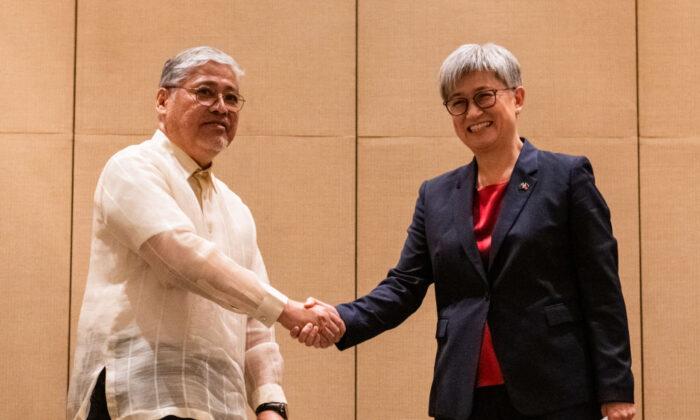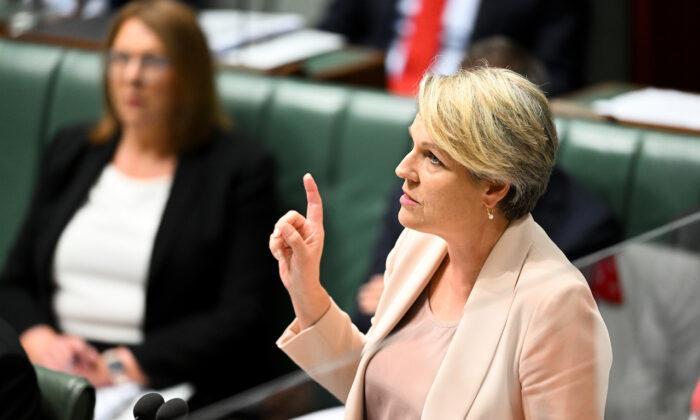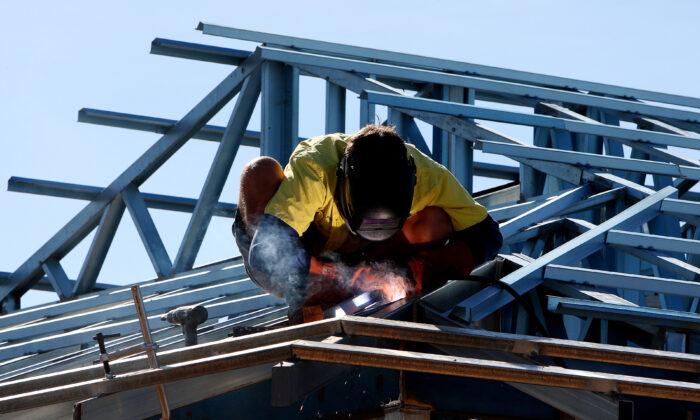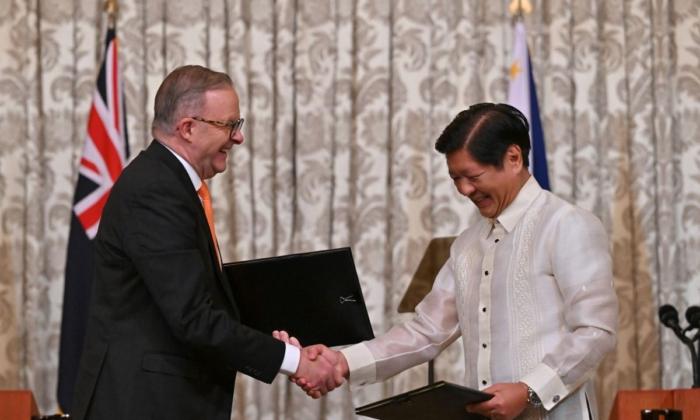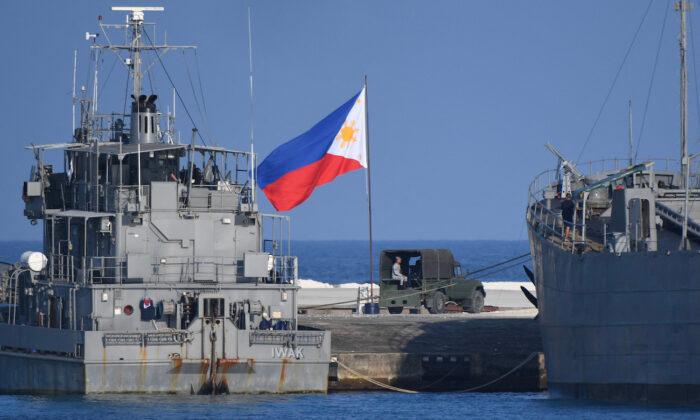Australia will provide the Philippines with drone equipment, training, and other technology to strengthen its Coast Guard maritime domain, awareness, and protection capabilities.
Wong told journalists that the Australian government was “deeply committed” to elevating the relationship between the two countries to that of a strategic partnership as both are like-minded partners who seek a peaceful, open, and stable region.
“We think that finalises what is already in practice a strategic partnership and a formal strategic partnership recognises the importance of our relationship and the depth and breadth of our cooperation,” the foreign minister said.
“The Philippines is a vital, longstanding security partner for Australia, and as our region navigates shifting strategic circumstances, we are working closely with each other to shape the sort of region we want—a peaceful, open, stable, prosperous region.
“In order to achieve our common goal of peace and prosperity for our peoples, we need to work with like-minded partners. Well, we are a like-minded partner, and we see you as such. And we recognise that no single country can do this alone and that stronger and better partnerships result in better outcomes for all.”
Wong also expressed that Australia would be open to increasing its maritime cooperation with the Philippines in the South China Sea and that both countries were working on how the logistics of that might occur.
Both countries want a region “that is predictable, that operates by agreed rules, standards, and laws in which sovereignty is respected,” Wong said.
Diplomacy Follows China’s Increasingly Difficult Behaviour
The decision by the Australian government to ramp up to provide surveillance equipment and increase ties with the Philippines follows an increase in tension in the Indo-Pacific, during which China’s communist regime has repeatedly violated the Philippines’ economic rights by illegally fishing in the nation’s waters and temporarily blinding a Filipino Coastguard crew with a military-grade laser.Vice Adm. Joseph Coyme, chief of the PCG’s Maritime Safety Services Command, has told journalists that based on aerial surveillance conducted on May 13, the buoys are still in place but warned if Chinese boats touched the markers, there would be serious repercussions.
US Also Strengthen Ties
The United States has also moved to strengthen its ties with the Philippines, with President Joe Biden meeting with Philippines President Ferdinand Marcos Jr. at the White House on May 1, where the two agreed to increase military coordination.“What we’ve seen recently is a series of continuing provocative acts on the part of China testing and probing into the Philippines’ waters, in areas of deep concern to the Philippines,” a senior Biden administration official said during a press call on May 1.
The official added that Marcos was reluctant to place his country between the United States and China. However, he was now being forced to diversify the Philippines’ security engagements in light of the Chinese Communist Party’s (CCP) continued belligerence.
“The Chinese have taken some steps that have been really concerning to the Philippine leadership,” the official said.
“Just earlier in the week, the Chinese ambassador to Manila gave a speech about changing circumstances in the Indo-Pacific and appeared to talk about the safety and security of the nearly 200,000 Filipinos living in Taiwan. I think many in the Philippines saw that as a veiled threat.”
The Philippines must cease its defence cooperation with the United States “if you care about the 150,000 overseas [Filipinos in Taiwan],” he said.
“The United States stands with our Philippine allies in upholding the rules-based international maritime order and reaffirms that an armed attack in the Pacific, which includes the South China Sea, on Philippine armed forces, public vessels, or aircraft, including those of the Coast Guard, would invoke U.S. mutual defence commitments under Article IV of the 1951 U.S. Philippines Mutual Defense Treaty,” the statement read.
